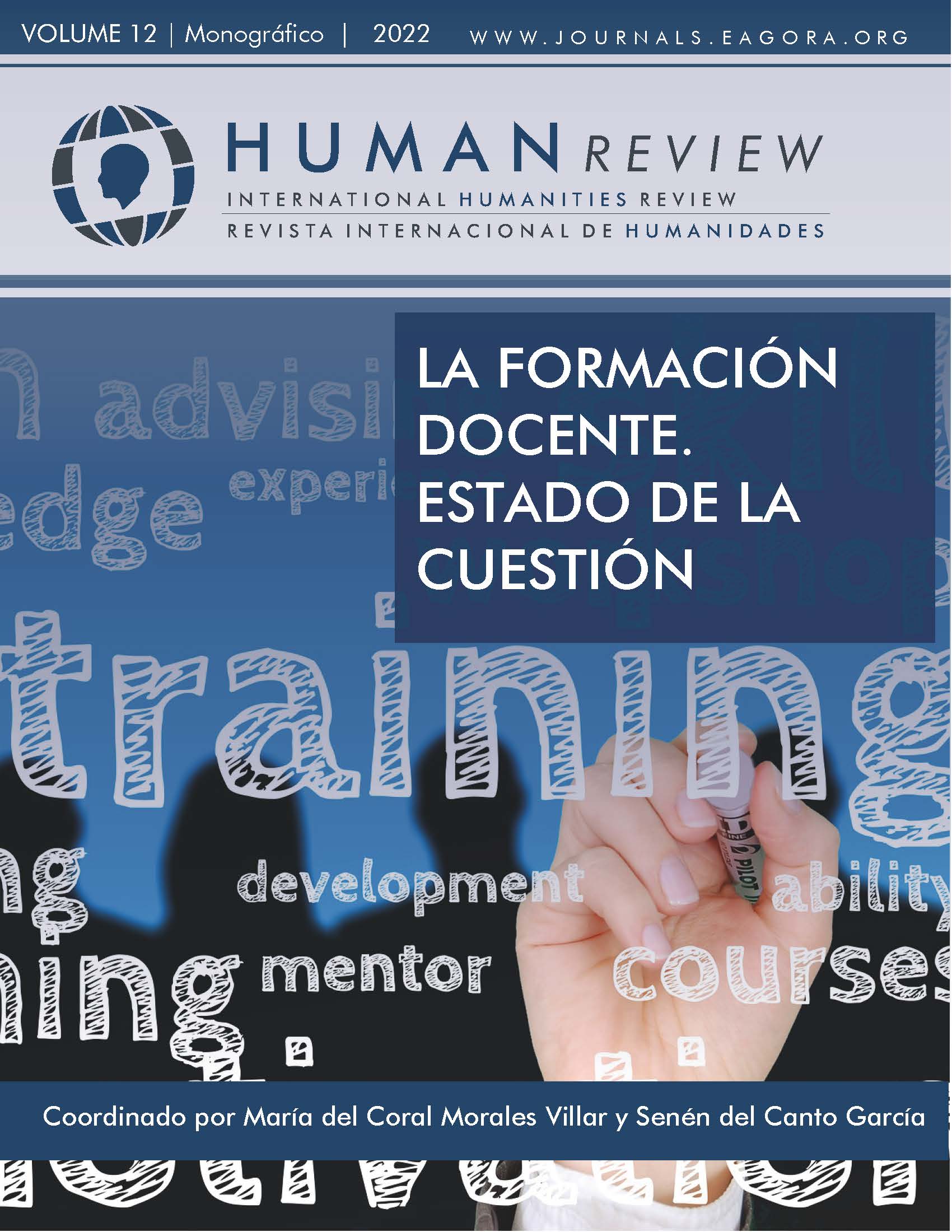Audiovisual Resources and Scientific Method in the initial training of teachers
Keywords:
Audiovisual resources, Scientific method, Initial training, Teachers, Inclusion, Key competencies, Cooperative learningAbstract
The present study shows the opinion of preservice teachers in relation to the use of audiovisual resources, more specifically the educational video, to learn the scientific method in the Primary Education stage. A questionnaire is carried out before and after the intervention and the data are compared through the statistical program SPSS v.26. The results show that there are significant differences in aspects such as its usefulness for teachers, inclusion or as a resource to work on environmental education. In addition, there is an increase in the means (not significant) in the other questions raised.
References
Arnau Amat, I. S. (2019). Las emociones de los estudiantes de magisterio en relación a los procesos de enseñanza y aprendizaje de las ciencias y de las matemáticas. Enseñanza de las ciencias: Revista de investigación y experiencias didácticas, no Extra, pp. 2053- 2058. Recuperado de:
https://www.raco.cat/index.php/Ensenanza/article/view/336782
Besley, J. C., & Nisbet, M. C. (2013). How scientists view the public, the media and the political process. Public Understanding of Science, 22, 644-659. doi:10.1177/0963662511418743
Bobroff, J., y Bouquet, F. (2016). A project-based course about outreach in a physics curriculum. European Journal of Physics, 37(4), 045704. https://doi.org/10.1088/0143-0807/37/4/045704
Bravo Lucas, E., Costillo Borrego, E., Bravo Galdán, J.L. y Borrachero Cortés, B. (2019). Emociones de los futuros maestros de Educación infantil en las distintas áreas del currículo. Profesorado. Revista de Currículum y Formación del Profesorado, vol.23, no4, pp. 196- 214.
Burn, A., Brindley, S., Durran, J., Kelsall, C., Sweetlove, J., y Tuohey, C. (2001). The rush of images: A research report into digital editing and the moving image. English in Education, 35(2), 3447.
Cebrián, M. y Solano, N. (2008). Evaluación de material videográfico de apoyo al aula de primaria. Pixel-Bit. Revista de Medios y Educación, 33,43-58.
De Souza, K. I., y Ferreira, S. (2008). El uso del video digital en clase de enseñanza: una propuesta pedagógica. Comunicar,16(31),457-462.
Fernández-Río, J. (2018). Creación de vídeos educativos en la formación docente:un estudio de caso. Revista Electrónica Interuniversitaria de Formación del Profesorado, 21(1), 115-127. http://dx.doi.org/10.6018/reifop.21.1.293121
Galindo-Domínguez, H. (2020). Estadística para no estadísticos: una guía básica sobre la metodología cuantitativa de trabajos académicos (Vol. 59). 3Ciencias.
Guisasola, J., Ametller, J., y Zuza, K. (2021). Investigación basada en el diseño de Secuencias de Enseñanza-Aprendizaje: una línea de investigación emergente en Enseñanza de las Ciencias. Revista Eureka sobre Enseñanza y Divulgación de las Ciencias, 18(1).
Haran, B., y Poliakoff, M. (2011). SPORE series winner. The periodic table of videos. Science, 332(6033), 1046-7. doi:10.1126/science.1196980
Hidalgo Navarrete, J., y Aliaga Zegarra, S. E. (2020). Análisis de las estrategias didácticas para el diseño, selección, producción, utilización y validación de recursos educativos audiovisuales interactivos en una institución educativa. estudio inicial. Revista Electrónica de Investigación y Docencia (REID), (23), 79-98.
Hofer, M., y Swan, K. (2005). Digital moviemaking—the harmonization of technology, pedagogy and content. International Journal of Technology in Teaching and Learning, 1(2), 102110.
Hoffenberg, H., y Handler, M. (2001). Digital video goes to school. Learning and Leading with Technology, 29(2), 1015.
Jaramillo, A. (2005). Vídeo argumental y educación en ciencias: una relación paradójica. Comunicar, 24, 121-128.
Oviedo, H. C., y Campo-Arias, A. (2005). Aproximación al uso del coeficiente alfa de Cronbach. Revista colombiana de psiquiatría, 34(4), 572-580.
Pérez, C. (2001). Técnicas estadísticas y SPSS. Madrid: Prentice Hall.
Resnick, M. (2008). Sowing the seeds for a more creative society. Learning & Leading with Technology 35(4), (1822).
Ríos, J.M. y Cebrián, M. (2000). Nuevas Tecnologías de la Comunicación y de la Información aplicadas a la Educación. Málaga: Ediciones Aljibe.
Ríos, A. R., y Peña, A. M. P. (2020). Estadística inferencial. Elección de una prueba estadística no paramétrica en investigación científica. Horizonte de la Ciencia, 10(19), 191-208.
Ryan, S. (2002). Digital video: Using technology to improve learner motivation. Modern English Teacher, 11(2), 7275.
Salas-Pilco, S.Z. (2013). Evolution of the framework for 21st century competencies. Knowledge Management & E-Learning: An International Journal (KM&EL), 5(1), 10-24.
Salinas, J. (1995). Televisión y vídeo educativo en el ámbito universitario: producción, coproducción, cooperación. En J.I. Aguado y J.Cabero (Dir): Educación y Medios de Comunicación en el contexto iberoamericano (103-120). Huelva: Universidad Internacional Iberoamericana.
STEM Education Turkey Report (2015). Gunun Modasi mi? Yoksa Gereksinim mi?
The Wellcome Trust. (2000). The role of scientists in public debate. www.mori.com/polls/2000/wellcometrust.shtml

